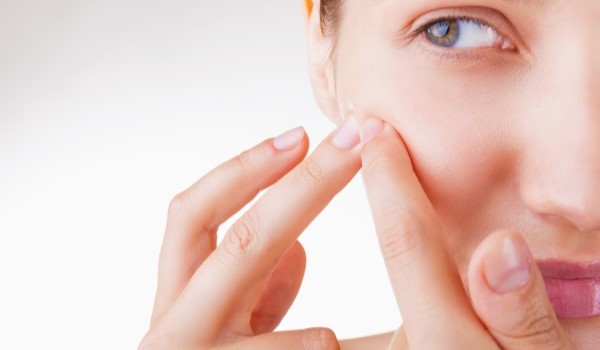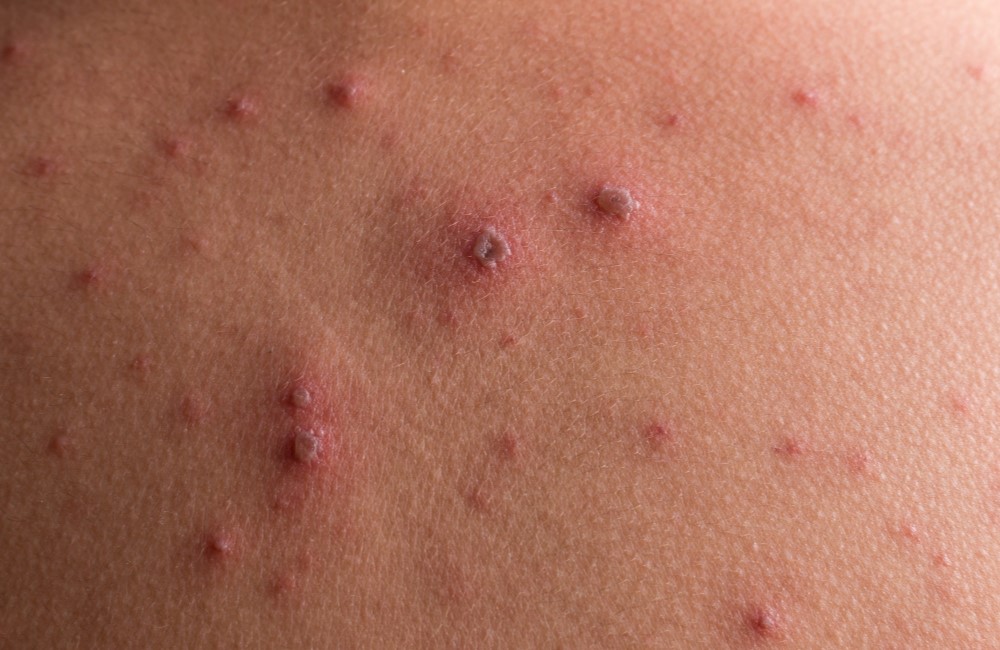What is actually
Acne?
Acne (acne vulgaris = “common acne”), one of the most common skin diseases, affects millions of people worldwide, especially during puberty and young adulthood. This inflammatory skin disorder usually occurs on the face, back and chest and is caused by blocked sebaceous glands. Acne can lead to pimples, blackheads, pustules and even scarring, which often leads to psychological stress. Find out more about the causes, treatment options and prevention strategies for this widespread disease.
About the symptoms
More information
Important facts about acne

Symptoms and consequences of acne
- Blackheads (open and closed comedones)
- Red, inflamed pimples (papules)
- Pus-filled pimples (pustules)
- Nodular, painful inflammations (cysts)
- Redness and skin irritation
- Scarring (e.g. acne scars or smallpox scars)
- Pigment changes and skin spots
- Mental stress such as anxiety and depression
- Self-esteem problems and social isolation
Topline
What types of acne are there?
Acne vulgaris: the most common type
Acne vulgaris: the most common type
Acne vulgaris is the best known form of acne and is also known as "common acne". It is triggered by hormonal changes during puberty (hormonal or hormone-induced acne). Boys are usually more affected by puberty acne than girls.
Acne as an allergic reaction
Acne as an allergic reaction
Other forms of acne may develop if the skin cannot tolerate certain substances found in skin care products (e.g. face cream), medication or food. These include Contact, cosmetic or chlorine acne, drug acne (acne medicamentosa), doping acne
Acne inversa (acne inversa)
Acne inversa (acne inversa)
Acne inversa is a skin disease with extensive inflammation, especially in the armpit and genital areas. It is a chronic disease with inflammatory nodules and abscesses of the sebaceous glands and terminal hair follicles.
Newborns ("baby acne", acne neonatorum)
Newborns ("baby acne", acne neonatorum)
Newborn acne appears as small blackheads, mainly on the cheeks, possibly even before birth or in the first few weeks of life. Therapy is not necessary, as it disappears on its own within a few weeks.
Infant acne ("toddler acne", acne infantum)
Infant acne ("toddler acne", acne infantum)
Infant acne occurs between the third and twelfth month of life, more frequently in boys than in girls. Small yellowish pimples on the forehead and cheeks can lead to scars. Medical treatment is recommended to avoid complications.
Mallorca acne
Mallorca acne
A special variation of acne is the so-called Majorca acne (acne aestivalis). It differs from typical acne as it is actually a form of light allergy or sun eczema (polymorphic light dermatosis).
Causes and risk factors of common acne
Common acne, also known as acne vulgaris, has various causes and risk factors
Hormonal
Hormonal
Acne is caused by male sex hormones (androgens, especially testosterone), which also increase in women during puberty.
Blocked sebaceous glands
Blocked sebaceous glands
Excessive production of sebum (skin oil) clogs the hair follicles and encourages the formation of comedones (blackheads).
Bacterial infection
Bacterial infection
The bacterial species Propionibacterium acnes multiplies in the clogged follicles and leads to inflammation.
Stress as a risk factor
Stress as a risk factor
Stress can trigger hormonal changes that promote acne
Infant acne ("toddler acne", acne infantum)
Infant acne ("toddler acne", acne infantum)
Infant acne occurs between the third and twelfth month of life, more frequently in boys than in girls. Small yellowish pimples on the forehead and cheeks can lead to scars. Medical treatment is recommended to avoid complications.
How is acne diagnosed?
Acne is easy to recognize due to its external appearance, with pustules, blackheads and pimples as clear symptoms. Nevertheless, it is advisable to consult a dermatologist before undergoing independent treatment in order to rule out other skin diseases and to determine the type of acne and the best therapy.
If the doctor suspects an infection, he may be able to take secretions from the blackheads and analyze them to determine which bacteria are causing the infection. The appropriate treatment is determined on this basis.
What measures can be taken for acne?
Prevent
Gentle skin or facial cleansing is important for acne. Special syndets for blemished skin enable gentle cleansing. Avoid greasy products and choose a light moisturizer with an oil-in-water base. When concealing acne with make-up, non-comedogenic products or antiseptic concealer creams should be used. To prevent inflammation and scarring, it is advisable not to squeeze out blackheads and pimples yourself.
Drug treatment
Various therapies are available to eliminate acne. These can be roughly divided into two categories: external (topical) acne treatments, such as ointments and peelings, and holistic (systemic) treatments with internal acne medication.
Home remedy
Home remedies such as healing clay, tea tree oil or sage oil are well-known and frequently used natural options to treat acne or support acne treatment. Healing clay is the best-known home remedy for acne, often used as a supplement to drug therapy. Mixed with water as a paste or powder, it is applied to the skin and dried. The treatment removes fat, sebum and skin flakes and promotes blood circulation.
Sources
Please note that all content provided regarding individual medical conditions, treatments, procedures, etc. is general information and may vary depending on the physician:in and individual case and initial situation.
For more detailed information, please always consult your doctor.
Bundesverband der Deutschen Dermatologen e.V.: "Acne - more than just a few pimples during puberty", message from 26.04.2019 (retrieval date: 24.07.2023)
LinkS2k guideline of the German Dermatological Society (DDG): "Treatment of acne" (as of 10/2011)
BMJ Best Practice (2018): Acne vulgaris. (Accessed: July 2023).
LinkCochrane Compact (2015): Complementary therapies for common acne (acne vulgaris). (Accessed: July 2023)
LinkWilliams HC, Dellavalle RP, Garner S. Acne vulgaris. Lancet 2012; 379(9813): 361-372.